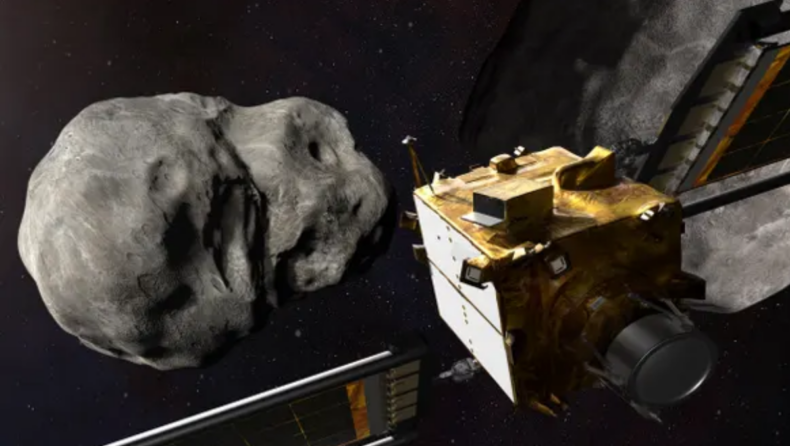NASA has announced an official demonstration of its planetary defence system DART soon.
The National Aeronautics and Space Administration (NASA) has officially declared that it will soon demonstrate its nationally created planetary space defence system to the people. This protection system is referred to as DART ( Double Asteroid Redirection Test). This demonstration will take place around 4:30 am IST on September 27.
This $ 50 million spacecraft will crash into a passing asteroid Dimorphos soon in order to check certie scientific calculations. This is one of a kind experiment hailed as a pioneer of human engineering and abilities. If this experiment succeeds, it will open up new doors and opportunities for humans in the next era to safeguard their survival on the planet Earth.
The Spacecraft DART: DEFENCE SYSTEM
This jaw-dropping expensive spacecraft is built solely by NASA. It is 160 m wide and weighs around 600 kgs, which is extremely less compared to the other satellites that have been launched into earth’s orbit.
This spacecraft has been orbiting its target asteroid Dimorphos for a couple of months in order to track its path. This target asteroid is 780 m wide and regular in size as compared to other asteroids in the solar system.
How will this experiment work?
This hefty and risky experiment will work on the physical principle of the “ Kinetic Impact Method’’. This method clearly states that when the spacecraft crashes into the moving asteroid, it will transfer all its kinetic energy to the asteroid. Though some of the energy might get lost as sound, light and heat energy, mostly it will get transmitted to the asteroid.

This impact, though small in scale, can ever so slightly change the orbit of the giant asteroid. This will drastically reduce the chances of that asteroid hitting the planet Earth. Hence, it is called the Planetary Space Defence System because of its ability to protect planet Earth.
The aftermath of the Experiment
The scientists claim that the size and shape of the target are unknown. Hence, the instrument onboard the spacecraft DRACO ( Didymos Reconnaissance and Asteroid Camera for Optical Navigation) will capture high-resolution images of the asteroid Dimorphous.
During the last 4 hours of the mission, the DART will stay aimed at the asteroid while it manoeuvres itself autonomously. About 50 minutes before contact, it will transfer data to the laboratories.
Moreover, to track the path and impact of the mission, several space telescopes will be pointed toward the asteroid. The telescopes including the James Webb Telescope, and the Hubble Telescope will have their eyes trained on the impact to collect as much information as possible. The cameras on the spacecraft LICIACube have already detached themselves from the spacecraft, clicking the pictures autonomously.
Read More: NASA Moon Mission delayed.
Chances of an asteroid hitting the Earth
Well, the scientists from John Hopkins University claim that for the next 100 years, there is no immediate threat to Earth from such asteroids. But keeping in mind the track record of our planet and the moon, it is extremely likely that we will be endangered by the impact of some large asteroid.
Hence, NASA is testing this technology to protect the species from such future impacts. This technology is still in its testing phase and there is a long way to go before it’s completely ready. NASA scientists have stated that in the event of an actual threat, this mission will be carried out 20 years in advance, to significantly change the course of the asteroid.
It is important to note that the current target asteroid Dimorphos is not a threat to our planet. Moreover, this experiment won’t disturb the planetary system or asteroid system. This is not scientifically possible considering the actual impact of the mission.
To put it in a picture, the target asteroid weighs about 5 billion kilograms while the DART system weighs mere 600 kilograms.
It will be equivalent to crashing a golf cart into the great pyramid of Egypt.
This might kick start a race towards planetary defence system development. Private players like Blue Oasis and SpaceX might jump in to create such systems once the US Government approves.
Hence, it will be worth seeing whether this kinetic mitigation theory tests out or not. Though the computer simulations have yielded positive results, the practical data is what will confirm the reality of this experiment.













